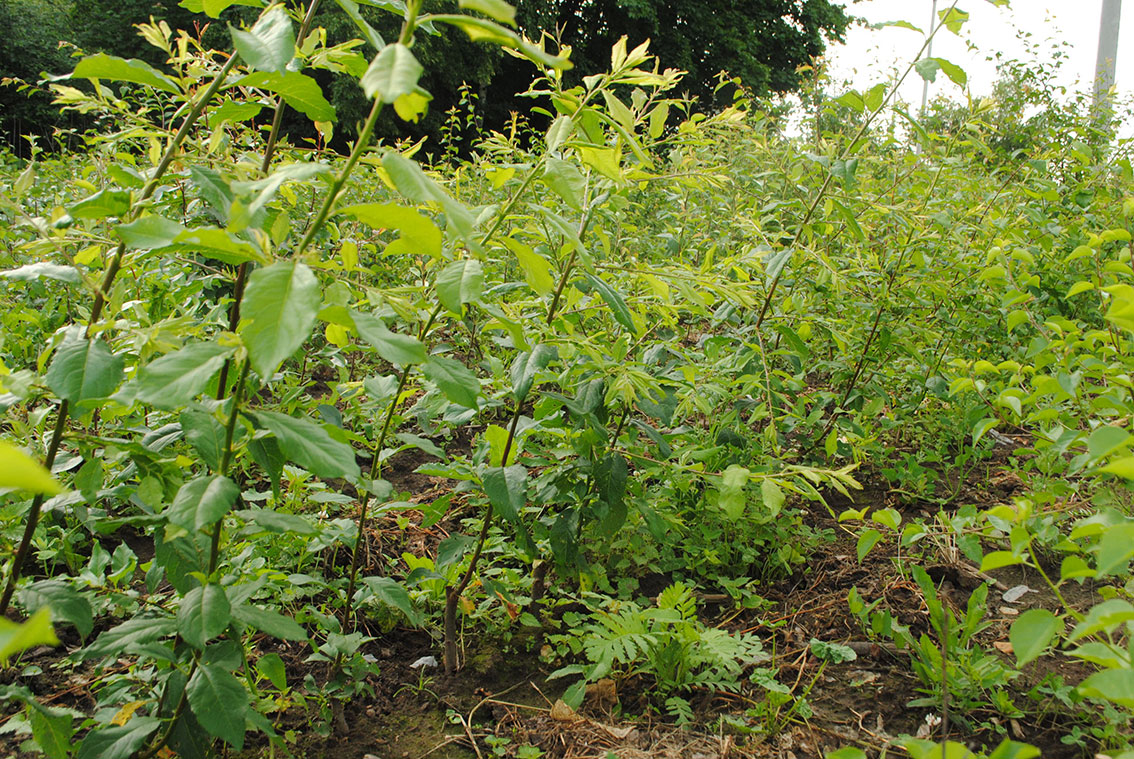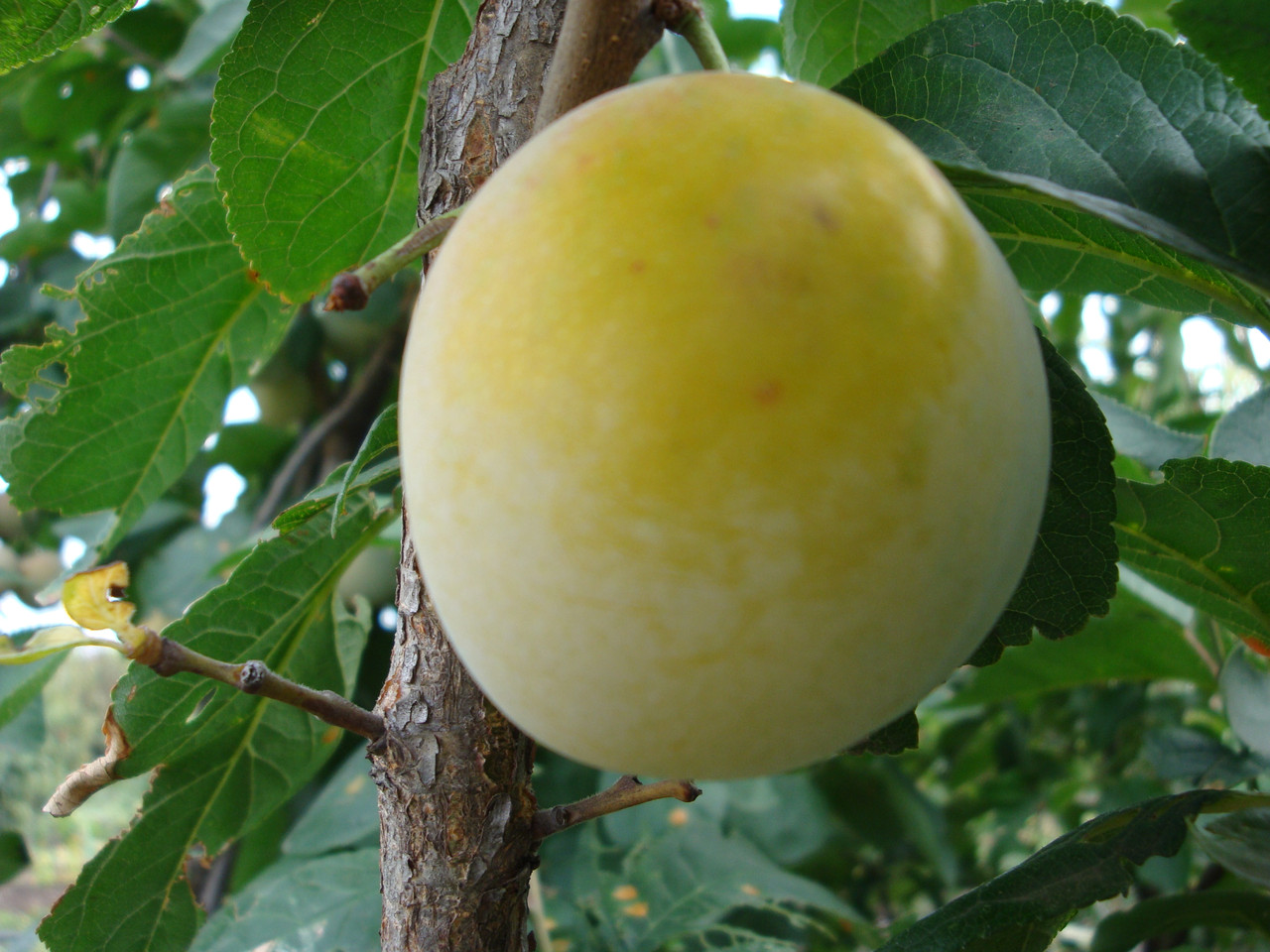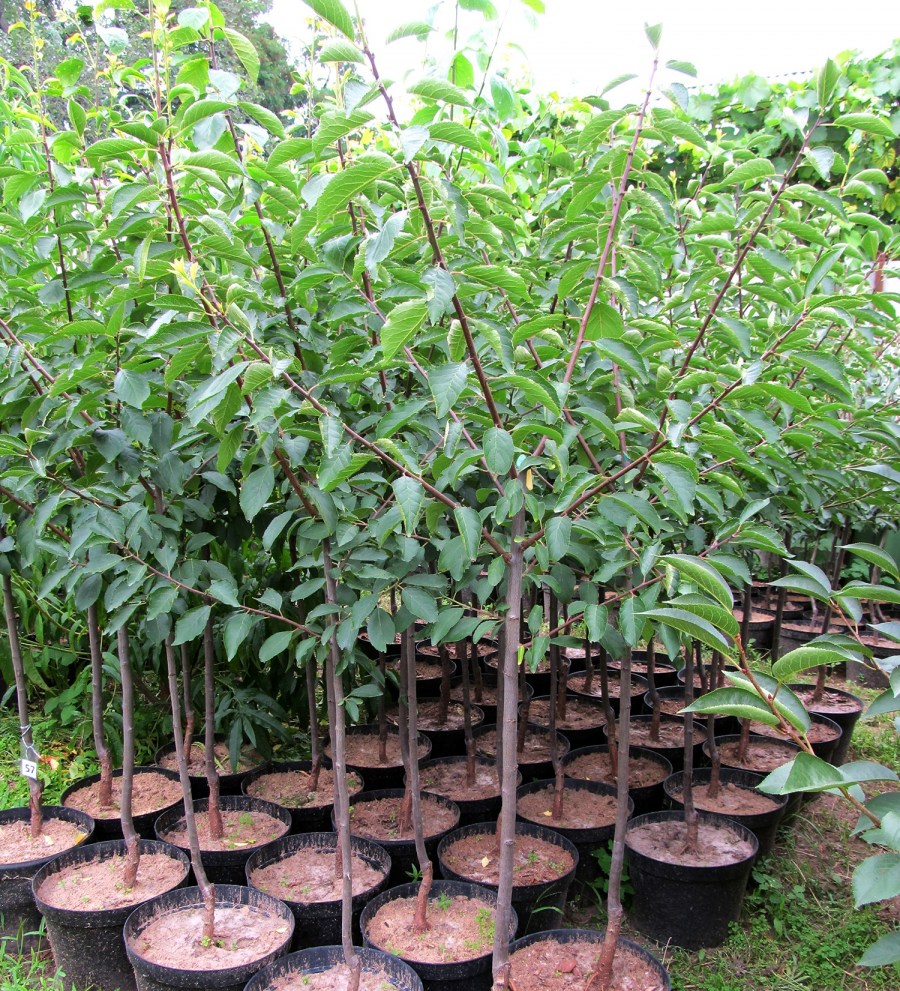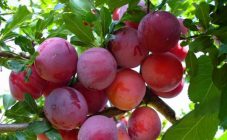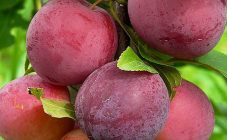Content:
The homeland of cherry plum is the Transcaucasus and the northern part of Asia. In the wild, it is found in Moldova, Asia, Ukraine, the Balkans, Tien Shan and Western European territories. It is cultivated as a cultivated plant in Ukraine, Russia, western Europe, Asia. Cherry plum seedlings take root remarkably in a variety of climatic conditions.
Description of culture
Breeders have bred many species that differ in fruit color, size and taste, which are able to take root in the Moscow region and central Russia.
Botanical characteristics:
- grows as a tree or deciduous shrub;
- belongs to the Pink family of the genus Plum;
- trunk height - 2-13 m, thickness - up to 50 cm;
- inflorescences of white and pink color, the arrangement on the branches is single and in pairs;
- some varieties have thorns on the branches;
- flowering period - mainly May, duration - 8-10 days;
- fruit shape - round, oval, weight on average 15 g (large-fruited varieties - up to 80 g).
Cherry plum rarely tastes like a plum; each variety of culture has its own flavor note, which can be sweet or sour.
To systematize their work, breeders have identified five main varieties of cherry plum from the variety of trees:
- Syrian;
- spread out;
- Caspian;
- Iranian;
- fergana.
In comparison with garden varieties of plum, cherry plum stands out for the following advantages:
- increased resistance to drought;
- unpretentiousness to care, soil composition;
- rapid ripening of the tree, readiness to bear fruit, starting from the second season;
- long productive period (30-50 years);
- the ability to bear fruit annually;
- long life cycle.
Among other things, the plant is a good honey plant. Cherry plum is used in the confectionery industry for the manufacture of jam, juice and pastilles.
Among the disadvantages of culture, there is a sensitivity to low temperatures and a high rate of self-infertility.
Sapling selection
When choosing a cherry plum seedling, preference should be given to young plants (ideally one year old). The survival rate of a three-year-old is low. Hybrid varieties bred by modern breeders are considered worthy options. They have strong immunity, withstand severe frosts and drought, and bear fruit stably.
Criteria for a good seedling:
- closed root system;
- age - no more than 1-1.5 years;
- modern hybrid;
- sleeping buds on branches;
- the cut of the roots is white.
The interval between the purchase of a seedling and its planting should be shortened as much as possible. If this is not possible, then it is recommended to put the plant in a container with water. During transportation, the rhizome should be wrapped with a well-damp cloth. Upon arrival at the landing site, you can temporarily dig the trunk in the shade, positioning it at an angle. The soil should cover the tree 1/3 of its entire length. In this state, cherry plum is sometimes left to winter if the weather conditions in the fall have deteriorated sharply. But in the spring, until the buds have blossomed, the seedling is transplanted to a permanent place.With the buds in full bloom, it will not work to get a productive tree, if it survives at all.
Landing space
Cherry plum is one of the few plants that can be planted on soils with a high level of groundwater. But this indicator should not rise above the 1 m mark. Otherwise, the risk of root rot is great.
When choosing a place, preference should be given to a sunny site, in the shade of cherry plum grows and bears fruit poorly, even fertile land does not save. Does not respect the plant and drafts. From the cardinal points, preference is given to the southern or southeastern side.
It is better to choose spring from the seasons of the year for disembarkation, but on condition that the buds do not have time to open. You need to focus on the weather. After the onset of stable positive air temperature at night, planting work is carried out no later than 2 weeks. In the fall, the risk of root freezing increases. For a young plant, a change in environment is stressful in itself, and severe frost will leave no chance of survival.
How to plant
How to plant cherry plum correctly? Planting cherry plum is a simple process. When planting several plants or filling free space in the garden, it is worth observing the interval between neighboring crops from 3 to 3.5 m.A preliminarily a hole is dug at the selected place with the following parameters: depth - at least half a meter, diameter - about 70 cm.Do not forget about the fact that you need to feed the soil before planting. Before burying the seedling, you need to prepare a nutritious pillow from the following components:
- humus (15 kg);
- superphosphate (100 g);
- ash or lime (400 g);
- potassium salt (60 g).
Top dressing is applied and mixed thoroughly. How to plant cherry plum correctly. Dilute the prepared mixture with a bucket of fertile soil and, using half of the portion, add it to the pit. Distribute it evenly. Planting a tree is best done in the evening. The seedling should be installed in the hole so that 3-4 cm of the root collar remain above the soil surface. The root shoots must be carefully straightened and covered with the second half of the soil mixture. Compact the earth with a tool or hands, form a hole for irrigation. At the final stage of planting, the top of the seedling is cut at a height of 25-30 cm.
The planting process is not difficult, however, it requires compliance with all the conventions. Reproduction of culture is carried out mainly by cuttings.
During the period of plant adaptation to a new environment, good watering is necessary. Immediately after disembarkation, 2 buckets of water are poured into the hole, after which the trunk circle is covered with mulch. This will prevent the roots from drying out. Sawdust, dry grass or leaves are used as mulch. Artificial mulching material is also suitable.
Care and cultivation of cherry plum is an interesting process. Following the recommendations of experts, you can grow a healthy tree that will bear fruit abundantly.
Often summer residents are interested in why cherry plum does not bear fruit. The lack of fruit yield is most likely due to the biological characteristics of the crop and unfavorable weather conditions in the winter-spring period.
Care features
Cherry plum care is simple. The planted cherry plum needs attention, therefore, subsequent measures are aimed at facilitating and shortening the adaptation period, strengthening the root system. A young plant must be watered regularly - up to 5 times a season. 1.5-2 buckets are poured into the hole. An adult tree is irrigated three times: after flowering, when the growth of shoots is inhibited, after the fruits acquire a mature color.
Every spring, before the sap flow begins, preventive measures are taken against pests and various diseases (fungal, viral and bacterial). Copper sulfate (1%) or iron sulfate (2%) is used as a working solution. A similar treatment will not hurt in the fall (October-November) to create a plant protection from insects and harmful microorganisms, which often seek refuge for the winter under the bark of trees.
Once every 2-3 years in the fall, cherry plum needs to be fed with organic matter. It is introduced into the trunk circle (10 kg of fertilizer per 1 m2). Every spring, the plant is fed with a mineral composition of urea (15 g), superphosphate (40 g) and potassium salt (15 g) (per 1 m2).
"Is it possible to plant cherry-plum on cherry-plum?" - summer residents often ask themselves. Many crops can be grafted onto cherry plum, including plum. To plant cherry plum on cherry plum is quite simple. Vaccination is carried out according to the usual scheme. Even an inexperienced gardener is able to carry out the vaccination.
Cherry plum pruning
It is best done in the spring. How to cut cherry plum and when is it better to do it? It is important to do this before the beginning of the period of sap flow (until the kidneys swell). In addition to forming a crown, it is necessary to free the tree from dried or affected branches. This can also be done in autumn in October. Plant rejuvenation extends its life cycle. How to form cherry plum correctly? The formed crown should have 4 - 5 skeletal branches with many shoots growing in the right direction. It is necessary to ensure that the distance between the tiers remains at the level of 45 cm. Excess branches should be cut off without regret.
As the weeds grow, they are weeded, after which the trunk circle is again covered with mulch. It is prohibited to use a gasoline trimmer for weed control, the plant will die from chemical compounds sprayed from the tool.
The lack of proper care for cherry plum reduces winter hardiness, the number of fruits. Gardeners often wonder why the cherry plum is still crumbling green? The main reason is lack of moisture.
Pests and diseases that are dangerous for cherry plum seedlings and methods of dealing with them
The main ailments that plum is prone to include:
- Hole spotting, which appears as brown spots on foliage. The affected tissue falls out, and holes form in the foliage. A small, dirty red spot deforms the leaf and gradually affects the branches, on which spots spread, leading to cracking of the bark. From the cracks that appear, gum begins to stand out. To combat the disease, it is necessary to burn all the foliage that fell off in the fall. Treatment of 1% Bordeaux liquid will help fight the disease. In case of severe damage, it is recommended to re-treat it 21 days before harvesting. As a preventive measure, cherry plum can be sprayed with 3% iron vitriol (until the moment when it begins to bloom) and not allow the crown to thicken.
- The milky shine differs from other ailments by a silvery coating on the cherry plum leaf. There is a true milky luster and a false one. A false form can manifest itself against the background of freezing of a tree in winter. To restore a plant, it is enough to take care of it, water it and fertilize it in spring and summer. The real milky shine is a fungal disease that penetrates deep into the wood and provokes the appearance of stem rot. Towards mid-July, the foliage becomes brown and begins to dry. To combat the fungal disease, the affected branches must be removed and destroyed. The resulting cut should be treated with a 1% solution of copper sulfate and garden varnish. For prevention purposes, it is advisable to spray trees with drugs that contain copper in the composition, in spring and summer. The stands of plantings must be processed with lime.
- Gray rot covering the surface of the fruit with gray pads that contain fungal spores. Branches and shoots quickly begin to turn brown and wither, growths appear on the surface of the bark.To avoid infection, it is necessary to systematically inspect trees and remove diseased fruits from the branches. Until the beginning of bud break, it is recommended to process the cherry plum with Bordeaux liquid.
- Marsupial disease is a fungal disease of cherry plum, in which the formation of bones in fruits is impossible. At the same time, cherry plum grows, deforms and becomes covered with a powdery coating. The pulp becomes wrinkled and greenish. All shoots that have been affected begin to bend and swell. When an illness occurs, it is very important to get rid of diseased fruits and shoots in a timely manner.
- Coccomycosis begins to develop in early June. The upper part of the foliage is covered with spots of a red-brown hue. Gradually, they begin to merge with each other, and the lower part of the leaf suffers from a powdery pinkish bloom. The foliage turns yellow and falls off prematurely. Fruits, before reaching full ripeness, dry up. For prevention purposes, it is important to burn the leaves collected from under the trees. In early April, cherry plum should be treated with Hom. Any gardening store will tell you which drug is best to use in a particular situation.
In addition to diseases, pests can also affect cherry plum. Most often, the plant is harmed by brown fruit mites, a slimy sawfly and an eastern moth. Why does cherry plum shed its fruits? The reason may be the moth, which spoils the harvest. In order to protect the tree from these pests, it will be necessary to periodically cleanse the trunk from dead bark and carry out treatments with drugs such as Karate or Fufanon. In the autumn, it is important to completely collect all the foliage from the site and burn them. Undoubtedly, the process of growing cherry plum is quite difficult. However, following the recommendations of experts and taking care of the seedlings, you can grow a healthy and fruitful tree, which will delight you with a weighty harvest and its beauty for many years.
